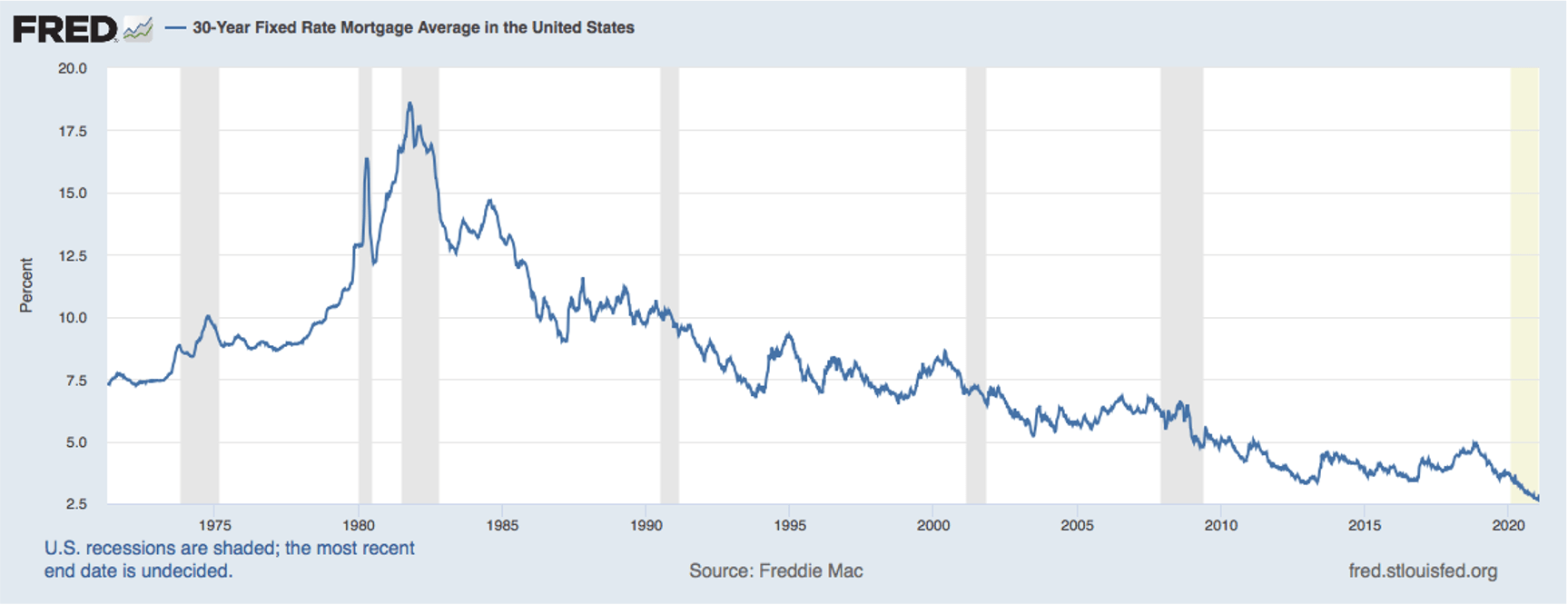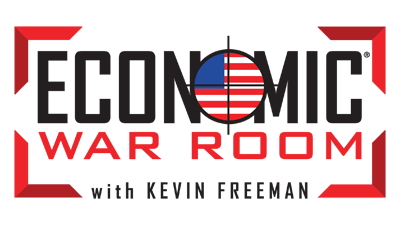
Inflationary pressures are building but the risk is almost unnoticed. No matter where you look, you should see clear signals that prices are on the rise. If you eat out, you’ve noticed. If you buy groceries, it’s obvious. When you fill up your tank, there’s no doubt.
It’s not just consumer prices that are rising. Producer costs are rising with commodity prices. What happens when Biden gets his $15/hour minimum wage? What happens when he increases regulations? How about cutting off American energy production and transportation? Consider this excerpt from the current episode of the Economic War Room™.
The reality is that the money supply has been expanding at an extremely rapid pace. And the amount of goods in production has been hammered by Covid. We are seeing shortages of all kinds of things, including semiconductors.
The problem is that for the past 45 years we have experienced a steady decline in inflation rates. We have grown accustomed to that. At the same time, interest rates have declined as well. As an example, mortgage rates have fallen sharply as shown in this chart from the Federal Reserve.

What happens if mortgage rates start to rise again? Inflation, as the cost of housing goes up. When you look at the spending of American homes, it is hard to find anything where costs are declining. Yet, the stock market appears to be pricing in an expectation of continuing low interest rates and inflation. What happens when both shock the markets by moving higher?
Just imagine what happens to our Federal debt and deficit if the interest rate paid were to rise from just over to 1% per year to 6%? that would cause a debt death-spiral that would consume more than half of all tax revenues just for interest! Our current interest payments are under $400 billion per year. But as we approach $30 trillion in reported Federal debt (assuming a large Biden stimulus), with 6% borrowing costs, the total interest cost would be $1.8 trillion. This will further pressure interest rates. Conservative estimates assuming no additional spending and no reduction in economic activity would suggest $34 trillion indebted the next year, and $37 trillion the next. By the year 2030 using these very conservative assumptions, we would have nearly $70 trillion in debt. Some think that is conservative. At 6% interest, the interest cost alone on $70 trillion would far exceed ALL Federal revenues this year. But if the debt grows that large, interest rates will not stay at 6%. They reached 15% in the early 1980s. That would be catastrophic if it happened on a $30 trillion debt base. It would be the end of America as we know her. Think Venezuela or Zimbabwe.
Higher inflation and interest rates would also drastically change the investment landscape. It’s a whole new dimension of global economic warfare and it would directly impact you. Stay tuned. The Biden policies will only add fuel to this fire. What we do about it is on us.












